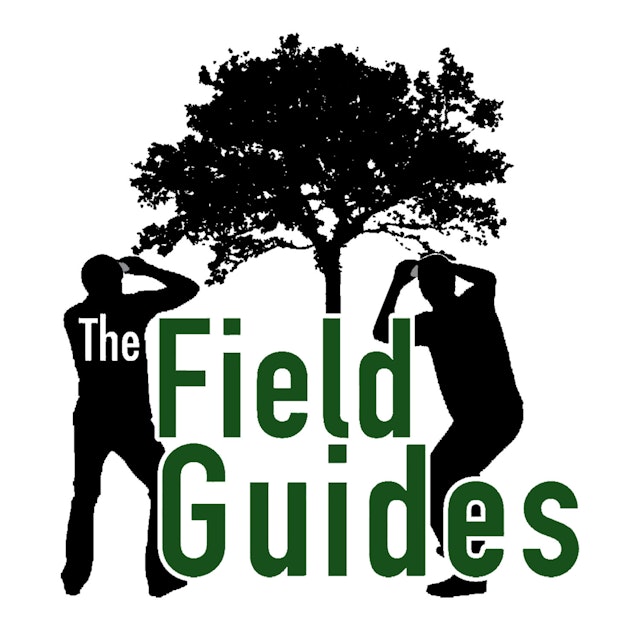Have you ever heard a mockingbird imitate a blue jay? How about a seal imitating a Maine fisherman? This month, the guys explore what happens when animals make sounds they’re not supposed to: the wild world of vocal mimicry. Birds imitate chainsaws and car alarms, elephants speak Korean; what’s going on? With a special focus on one of the bird world’s best known mimics - the northern mockingbird (Mimus polyglottos) - the guys delve into the research trying to explain why animals - especially birds - feel the need to engage in the wildlife equivalent of, “I know you are, but what am I?”
Episode Notes
Steve wondered about the similarity between the scientific names of the northern mockingbird (Mimus polyglottos) and monkeyflowers (in the genus Mimulus). Turns out that both refer to mimicking; the mockingbird (whose scientific name means ““many-tongued mimic”) imitates the sounds of other species, and the monkeyflowers have flowers that, at least to some, seem to have grinning faces resembling those of monkeys.
Bill mentioned that the viceroy butterfly (Limenitis archippus) is often mistakenly cited as an example of Batesian mimicry. What’s up with that? Here’s what the University of Wisconsin has to say about it: “Ecologists have long preached that Viceroys have enjoyed a Batesian “Get-out-of-Jail-Free” card due to their resemblance to the toxic Monarch butterfly (Batesian mimicry—the harmless imitating the harmful). Monarchs are poisonous because their caterpillar host plant, milkweed, contains harmful cardiac glycosides. Recent research suggests that because willow leaves are very bitter, the Viceroy may be almost as distasteful as Monarchs. In that case, Monarchs and Viceroys are mimicking each other, each cashing in on the other’s bad reputation (Mullerian mimicry).”
Check out episode 34: The Downy-Hairy Game for more info on Batesian and Mullerian mimicry
The guys wondered, “Are there any large passerines (songbirds/perching birds)?” The largest seem to be in the raven family; “The heaviest and altogether largest passerines are the thick-billed raven and the larger races of common raven, each exceeding 1.5 kg (3.3 lb) and 70 cm (28 in). The superb lyrebird and some birds-of-paradise, due to very long tails or tail coverts, are longer overall.” (Source: Wikipedia)
The guys briefly discussed mobbing behavior in birds, and Bill mentioned a couple of suspected reasons behind the behavior. He regretted not mentioning what is accepted as the most likely reason: to drive away predators!
Steve wondered, “Did mimicry evolve independently?” According to a 2018 study, “Vocal mimicry evolved independently at least 237 times and was lost at least 52 times.”
Since brown headed cowbirds are nest parasites and don’t raise their own young, how do their young learn the brown headed cowbird song? Turns out that the good people at BirdNote did an episode on this very topic in 2021! Here’s the takeaway from the episode transcript” “Scientists think that when a young cowbird hears the “chatter call” of an adult cowbird, something is triggered in its brain, and it begins to learn the song of its own species. Like a kind of “password,” the chatter call guides the young bird in recognizing what species to identify with. Then, when the young cowbird is ready — probably when it’s two years old — and hears an adult male Brown-headed Cowbird sing, it will imprint on that song. It’s a remarkable adaptation, even more so when you consider that cowbirds are fostered by as many as 220 different species. And they still wind up learning their own song.”
Links
Find out more about Hoover, the talking seal.
A clip of the superb lyrebird from the incomparable David Attenborough and his series Lives of Birds
Head down a fascinating rabbithole and explore the world of mimicry
Meet Koshik, the elephant that speaks Korean
Support
Make a onetime Paypal donation.
Our Sponsors
Photo Credit
(c) bluewing – some rights reserved (CC BY-NC)
Works Cited
Ancillotto, L., Pafundi, D., Cappa, F., Chaverri, G., Gamba, M., Cervo, R. and Russo, D., 2022. Bats mimic hymenopteran insect sounds to deter predators. Current Biology, 32(9), pp.R408-R409.
Gammon, D.E. and Altizer, C.E., 2011. Northern mockingbirds produce syntactical patterns of vocal mimicry that reflect taxonomy of imitated species. Journal of Field Ornithology, 82(2), pp.158-164.
Howard, R.D., 1974. The influence of sexual selection and interspecific competition on mockingbird song (Mimus polyglottos). Evolution, pp.428-438.
Owen-Ashley, N.T., Schoech, S.J. and Mumme, R.L., 2002. Context-specific response of Florida scrub-jay pairs to northern mockingbird vocal mimicry. The Condor, 104(4), pp.858-865.
The podcast The Field Guides is embedded on this page from an open RSS feed. All files, descriptions, artwork and other metadata from the RSS-feed is the property of the podcast owner and not affiliated with or validated by Podplay.
